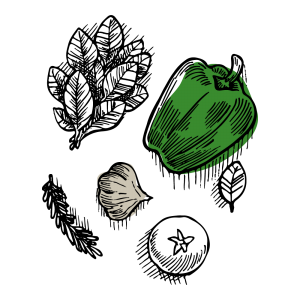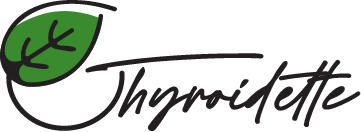Bioindivuduality: What it means,
and why general nutrition
guidelines are holding you back

Health and wellness are wide-scoped concepts that extend beyond the mere absence of disease. To promote optimal health, we look for physical as well as emotional, psychological, even social adjustment and fulfilment. I find it increasingly difficult to adopt a dualistic perspective that looks for answers for one question in one solution. A human being is more complex in all his needs, and his needs are not only constantly changing; the needs of every other human being is the same as his in those regards: ever changing, complex, and distinct. As paradoxical as that sounds, we are the same in that we are different. Like Berardi in his guide for Precision Nutrition, I as well can appreciate many food guides that are aimed at promoting better nutritional habits as their recommendations are an improvement on popular, heavily processed, and nutritionally poor eating patterns. Appreciation is one thing, recommendation is another.
 For that main reason, which is the bio individuality of each human being, I would rather promote an adaptable philosophy than a guide. That philosophy would be that the plan that works to get a specific body it’s specific needs is the plan that should be recommended. The needs are varied, and various food sources offer various nutrients, and all are needed. The answers to exactly how much and in what proportions are also varied. Roger J. Williams, a 20th century scientist who played a major role in the discovery of several vitamins, wrote a book titled Nutrition against Disease. One of my main takeaways from this book is that the importance of micronutrients cannot be overstated. In every chapter of the book, the author expands on how different nutrients play different roles, how they can come to act together, and sometimes includes examples of what can cause the need for a certain nutrient to be atypical and what causes recommendations to differ. Not a guide, but a nice visual on page 47 of the book, is ‘The Nutritional Chain of Life’, depicting a chain representing minerals and vitamins. Unlike USDA’s MyPlate for example that paints a plate with general headlines (Vegetables, grains, etc.) in specific proportions, the chain illustrated in Williams’ book reminds us that micronutrients are really what feeds the seed. What I like as well is that water here is central, not a cup on the side. Water is perhaps the least complicated nutrient to discuss, as it is the most universal and no living cell can do without it. Important footnotes by the author: “The chain representation is used to emphasize … that all links are needed; if even one link is missing or weak, the whole chain is weak…The proportions depicted do not apply literally to any one individual’s need. Everyone needs every link, but not necessarily in the exact proportions indicated.” (Williams 1981, p.47). I have sadly seen no guide put such emphasis on the smaller details, and believe these details, however cumbersome it may be to teach the general public about and to work with, to be essential for optimal health. A general guide could help as a start, but can only get a person so far.
For that main reason, which is the bio individuality of each human being, I would rather promote an adaptable philosophy than a guide. That philosophy would be that the plan that works to get a specific body it’s specific needs is the plan that should be recommended. The needs are varied, and various food sources offer various nutrients, and all are needed. The answers to exactly how much and in what proportions are also varied. Roger J. Williams, a 20th century scientist who played a major role in the discovery of several vitamins, wrote a book titled Nutrition against Disease. One of my main takeaways from this book is that the importance of micronutrients cannot be overstated. In every chapter of the book, the author expands on how different nutrients play different roles, how they can come to act together, and sometimes includes examples of what can cause the need for a certain nutrient to be atypical and what causes recommendations to differ. Not a guide, but a nice visual on page 47 of the book, is ‘The Nutritional Chain of Life’, depicting a chain representing minerals and vitamins. Unlike USDA’s MyPlate for example that paints a plate with general headlines (Vegetables, grains, etc.) in specific proportions, the chain illustrated in Williams’ book reminds us that micronutrients are really what feeds the seed. What I like as well is that water here is central, not a cup on the side. Water is perhaps the least complicated nutrient to discuss, as it is the most universal and no living cell can do without it. Important footnotes by the author: “The chain representation is used to emphasize … that all links are needed; if even one link is missing or weak, the whole chain is weak…The proportions depicted do not apply literally to any one individual’s need. Everyone needs every link, but not necessarily in the exact proportions indicated.” (Williams 1981, p.47). I have sadly seen no guide put such emphasis on the smaller details, and believe these details, however cumbersome it may be to teach the general public about and to work with, to be essential for optimal health. A general guide could help as a start, but can only get a person so far.
What an individual-based philosophy entails are also adaptation and flexibility. Numerous guides have emerged that are aimed to address certain chronic conditions, like AIP or GAPS to mention a few. While I would not recommend one guide in general for optimal health (even though personally I follow a variation of one), I believe such guides can help illustrate why an individual based approach is best. They aim to find by process of elimination and reintroduction what foods might be causing certain symptoms and what foods can help one achieve optimal health in an individual. What these guides recognize is that the issue is not only concerning the nutrients that we need in the body, but also the nutrients that the body might react negatively to at a certain point. Some of these guides also emphasise the importance of reintroduction to avoid intolerances, and the fact that a meal pattern that lacks variety and rotation can lead to more intolerances. Also, a plan that is unnecessarily restricted for too long may in the long run lead to multiple nutrient deficiencies.
To sum up, these are the reasons I believe an individual based philosophy might be better for optimal health than any generalised food guide:
- Generalised food guides tend to ignore important details (micronutrients for example) for the bigger picture. Optimal health is more likely achieved by paying closer attention to the details.
- Bio individuality, the fact that each body is unique, accounts for variable nutritional needs; a uniform guide does not all meet these necessarily. Recommendations might need to be nuanced.
- A guide is static, or implies rigidity. A human body grows and undergoes changes with time. Suiting the diet to the nutritional needs of now, as well as keeping an outlook for how those needs can evolve, could help avoid food intolerances and nutrient deficiencies. What good is optimal health if it fleets? If the aim is to stop looking for a cure, or better yet to stop the need to look for a cure, prevention and education are key.




